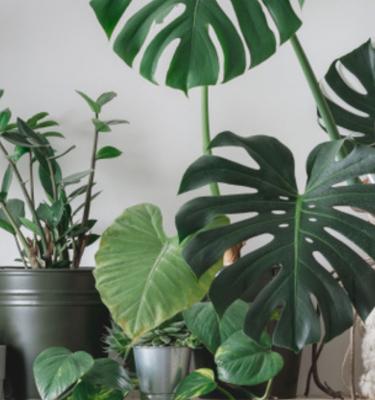Have you noticed that after rainfall plants seem greener, cleaner and lusher? That's because rainwater has benefits for plants that tap water simply cannot deliver.
Make the most out of the recent rain and use it to re-energise and refresh your indoor plants! You can either collect rainwater in a bucket to use later, or pop your indoor plants outside for a couple of hours.
Benefits of Rainwater
1. Rich in all the right things
The rain contains more Nitrogen and Oxygen than most tap water, and because your plant roots are receiving them directly, you’ll notice them grow quicker and greener with rainwater. Plus, micro-nutrients and minerals, which are already present in the soil, are unlocked by the rainwater soaking through and then readily absorbed by the plant roots.
2. Rain is soft water
Rainwater is free of salts, minerals and treated chemicals, which are all typically found in tap water. These chemicals, once soaked into the soil can build up over time, altering the soil pH and killing beneficial microbe/fungal communities, and thereby affecting plant health.
3. The perfect pH
The optimum soil pH for most plants to grow is 5.5 to 7 which is slightly acidic to neutral. Rainwater naturally is around a pH 7 scale - the ideal pH for plants. Also, rainwater aids in flushing out chemicals in the soil, as a result of watering with tap or groundwater, helping balance out the soil pH.
4. Keep it clean and green
Rainwater washes off any dust or debris on your indoor plant’s leaves, helping clear out their pores (Stomata). This greatly improves their ability to take in CO2 and nutrients for photosynthesis, promoting healthy plant growth.
Other Options
If rainwater isn’t an option where you are, don’t stress! Dechlorinated tap water is another great and healthy option for your indoor plants.
Simply, fill up a bucket of tap water and leave it to sit for a couple days, the chlorine found in straight tap water will naturally evaporate.
Precautions to Take
Rain, like all weather, can be unpredictable so there are some precautions to take when putting your indoor plant babies outside.
- Be on Wind Watch - You don’t want your plant to fall over and damage the pot, or worse, damage your plant leaves and stems. If the wind picks up, it’s best to take your pot plant indoors and collect rainwater with a bucket.
- Not Too Cool - Spring and Summer rains are often humid enough for them to be left outside for a little while. But, because most indoor plants are tropical, they won’t cope with being left outside in cooler temperatures for too long. That’s why we don’t recommend leaving your indoor plants outside overnight, except maybe on a warm Summer night.
- Light is Best - Heavy rain can damage your precious indoor plant. So, light rain is best for your plant to get all the benefits, without the risk.








